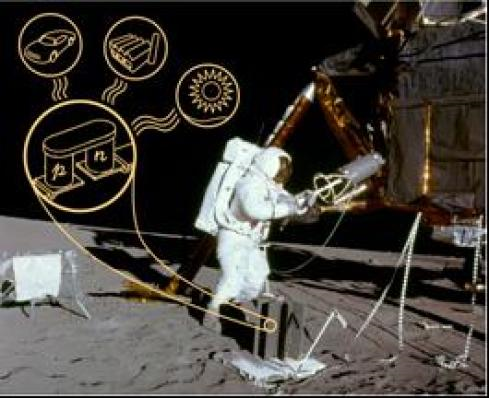发布时间:2013-03-11
题 目:Complex Thermoelectric Materials
报告人:Dr. Jeff Snyder (California Institute of Technology, USA)
时 间:3月19号(周二),上午9:30-10:30
地 点:物理馆512会议室
报告摘要:The widespread use of thermoelectric generators has been limited by the low material efficiency of the thermoelectric material。A number of strategies for Complex Thermoelectric Materials [1] with higher Thermoelectric figure of merit, ZT, are being actively studied at Caltech. Complex electronic band structures provide mechanisms to achieve high ZT in thermoelectric materials through band structure engineering。High ZT is obtained p-type PbTe and PbSe which contains both light and heavy valence bands that can be engineered to achieve high valley degeneracy which leads to an extraordinary peak ZT of nearly 1.8 at 750K [2]。
Complex crystal structures that enable relatively low thermal conductivity have lead to several new classes of thermoelectric materials。Ca3AlSb3, Ca3AlSb3 and Yb14AlSb11 are complex Zintl compounds containing differently connected AlSb4 tetrahedra that obtain zT near 1 at high temperatures。Fast diffusing or‘liquid-like’elements in the complex materials Zn4Sb3 [3] and Cu2Se [4] provide additional mechanisms to scatter and otherwise inhibit phonon heat conductivity。The principles of Zintl chemistry facilitates the search for new complex materials and the tuning of known thermoelectric materials with earth abundant, non-toxic elements [5]。
Finally, the incorporation of nanometer sized particles reduces thermal conductivity from long mean-free-path phonons. This principle has been successfully demonstrated in PbTe with large nanoscale precipitates (>100nm) that can be independently doped with La (n-type) or Na (p-type). The synthesis of nanoscale composites can be controlled with the aid of equilibrium phase diagrams (experimental or theoretically determined) to produce microstructure of varying composition and length scale [6]。

Figure 1:A thermoelectric generator directly converts heat into electricity with no moving parts。The long term reliability of these systems has encouraged NASA to use thermoelectric generators in many space probes since the 1960s (up to 35 years unattended)。Today,thermoelectrics are being considered for terrestrial applications such as automotive and industrial waste heat recovery as well as solar-electricity generation。
参考文献:
[1] G. J. Snyder, E. S. Toberer. “Complex thermoelectric materials” Nature Materials 7, p 105 - 114 (2008)
[2] Y. Z. Pei, G. J. Snyder, et al. "Convergence of Electronic Bands for High Performance Bulk Thermoelectrics"Nature 473, p 66 (2011)
[3] H.Liu, X.Shi, G.J.Snyder, et al. “Liquid-like Copper Ion Thermoelectric Materials” Nature Materials, doi:10.1038/nmat3273 (2012)
[4] G. J. Snyder, et al., "Disordered Zinc in Zn4Sb3 with Phonon Glass, Electron Crystal Thermoelectric Properties" Nature Materials, Vol 3, p. 458 (2004)
[5] E. S. Toberer. A. F. May, G. J. Snyder, ”Zintl Chemistry for Designing High Efficiency Thermoelectric Materials” Chemistry of Materials 22, p 624 (2010)
[6] D.L. Medlin and G.J. Snyder "Interfaces in Bulk Thermoelectric Materials" Current Opinion in Colloid & Interface Science 14, 226 (2009)
个人简介:
Dr. Snyder is a Faculty Associate in the Materials Science Department at Caltech and a Visiting Professor at Wuhan University of Technology and the Shanghai Institute of Ceramics - Chinese Academy of Sciences. He was a Senior Member of the Technical Staff in the thermoelectrics group at JPL for 9 years (1997-2006). He received his B.S. in physics, chemistry and mathematics at Cornell University and his Ph.D. in applied physics from Stanford University (1997) where he was a Hertz Fellow.
Dr. Snyder has over 200 publications on thermoelectric materials, devices and applications. Dr. Snyder is a board member and Treasurer for the International Thermoelectric Society, organizer of the Materials Research Lectures at Caltech, and has been an Adjunct Professor at Cal Poly Pomona teaching MTE208 Electronic Materials.